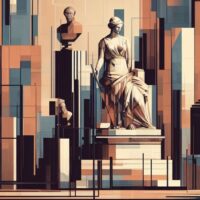Shawn Graham and I have this new free/open access article out for you to peruse! See the weirdness we uncovered when we used a computer to tell us what to investigate using knowledge we already had. It got crazy quick!
https://www.tandfonline.com/doi/full/10.1080/13527258.2023.2284740
Abstract:
Provenance research in museums has traditionally been reactive and focused on singular objects with dubious histories, such as colonial-era acquisitions, Nazi-looted art, and objects with active ownership claims; the ‘crimes’ we expect to see. But what if what we think we know prevents us from seeing the bigger picture within and across museum collections? We argue that a machine-learning approach to provenance could allow the detection of broader patterns of unethical or even criminal behaviour that are embedded in the relationships underpinning museum collections. To demonstrate the potential of a machine-learning approach, we present a computer-assisted model that predicts plausible patterns and connections, ‘leads’ or ‘hot tips’, derived from a dataset of unstructured texts concerning the antiquities trade. Preliminary results have revealed what may have been a multi-decade scheme involving the donation of low-value Latin American antiquities to museums as a form of ‘reputation laundering’ potentially in advance of criminal fraud. We believe that such patterns could not be identified by an approach to museum provenance that is restricted to known problems within individual institution, demonstrating the need for innovative provenance tools and approaches that consider the complex networks within which museum objects exist.
